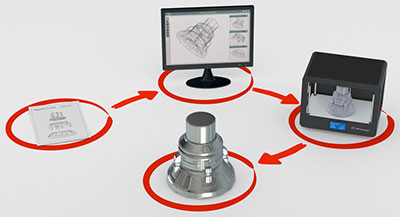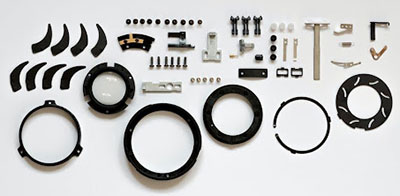Prototyping your Product Drawings
 After you’ve worked with our engineer on the product design phase and have first generation drawings ready, the next step is to get a prototype of your product made.
After you’ve worked with our engineer on the product design phase and have first generation drawings ready, the next step is to get a prototype of your product made.
The Importance of Prototyping
Some people make the mistake of wanting to jump straight to production and skip making a prototype, but this would be disastrous because:
- Until you’ve tested a prototype, you don’t know if the fit and function are correct and if your product will work as intended.
- After a prototype is made, most first general designs (as in 99%) need revising, updating, or improvements. There’s no way to determine if the product is ready for production from drawings alone. Even designs made by the most skilled engineers will need to go through some revisions.
- The tolerances may be too tight, or loose. Opening up tight tolerances can save you money as it will make it easier for the factory to produce. Tolerances that are too loose may cause problems in product fit or function. You won’t be able to assess the best tolerance range from drawings alone.
- Market research is a critical part of the product development phase. Especially if you’re a new business, it’s important that you show your prototype to as many of your potential customers as possible to get their feedback on the design, function, and price. Your customers’ input on your product is the only one that matters, as they would be paying for it. Your customers might have valid ideas for how you could improve the design or features of your product; just one of their suggestions might make the difference between roaring success and heart-wrenching failure.
 Ordering a shipment of product that hasn’t been prototype-tested and market-researched is like playing Russian roulette with five bullets in the chamber. The chances of your considerable financial investment paying off are slim to none. A production factory that makes an order of parts that are outside of the specifications of the manufacturing files is the factory’s fault and they should be responsible. But if you submit designs you haven’t tested to a factory and they follow your designs and the parts don’t work how you want them to, then you’ll be stuck with a lot of junk.
Ordering a shipment of product that hasn’t been prototype-tested and market-researched is like playing Russian roulette with five bullets in the chamber. The chances of your considerable financial investment paying off are slim to none. A production factory that makes an order of parts that are outside of the specifications of the manufacturing files is the factory’s fault and they should be responsible. But if you submit designs you haven’t tested to a factory and they follow your designs and the parts don’t work how you want them to, then you’ll be stuck with a lot of junk.
Prototype Manufacturing
Once you have first generation drawings ready, we will get a quote to get a prototype made from the appropriate prototype manufacturer in our group of prototype manufacturers. Depending on the cost per product, you might consider having multiple prototypes made to give away to your prospective customers. We work with prototype companies in China and the U.S., and will get a quote from the prototype manufacturing company that would be the best fit for your product’s materials and design, as well as taking price and delivery time into consideration.
Prototype manufacturing has come a long way over the last few years. It used to be that you were limited to a few plastics and metals and most prototypes were limited to CNC machining, which is costly to produce a couple parts. However 3D printing has opened up a range of materials for prototyping including more rubbers and plastics, and made prototyping more affordable for everyone.
We specialize in getting prototypes made in metals, plastics, and rubbers. Our range of prototyping capabilities includes CNC Machining, 3D printing, injection molding, laser cutting, and sheet metal prototyping.
We have found that our Chinese contacts can get prices on prototypes that have been 8 times less expensive than domestic solutions.
Quality Control for your Product Prototype
If you wish, our engineer can test or inspect your prototype to ensure it was made to the specifications provided in the drawings before sending it to you. Once you’ve completed the process of testing and market research at your end, our engineer can update your product’s drawings to reflect any necessary changes. If needed, we can get a quote to get another prototype made, or, we can move on to the step of getting a quote to produce your product on a production basis in China.
Photo credit: lucadp
